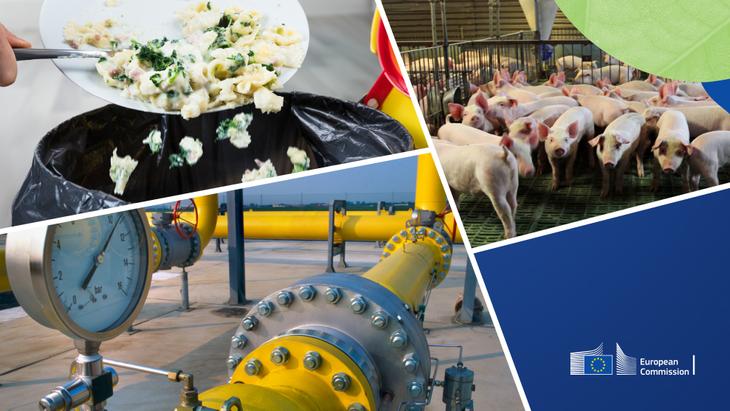The EU and the US just released a joint statement on the Global Methane Pledge, insisting on “the critical importance of rapidly reducing methane emissions as the single most effective strategy to reduce near-term global warming and keep the goal of limiting warming to 1.5 degrees Celsius within reach”. Worldwide, 9 of the world’s top 20 methane emitters are now participating in the Pledge, representing about 30% of global methane emissions. The European Union already approved its methane strategy in 2020 and new legislation is underway to curb methane emissions.
Where does it come from?
Methane (CH4) is the major component of natural gas (fossil gas) and bio-methane (gas from agricultural wastes). Oil and coal operations also release large amounts of methane. It comes from waste streams, especially open-air rubbish dumps, and from agriculture. And there are significant background methane emissions from swamps and the animal kingdom. In Europe, agriculture (53%), waste (26%) and energy (19%) account for up to 98% of human-made methane emissions.
Of these sources, the oil, gas and coal sectors could reduce their methane emissions relatively swiftly. Published in October 2020, the EU methane strategy sets out how the EU will legislate to measure, report and verify methane emissions, put limits on venting (intentional release of methane) and flaring (deliberate burning of gas), and impose requirements to detect leaks and repair them. These measures will apply in Europe, but they will hopefully be imposed on other countries as well, as the EU is the world’s largest oil, gas and coal importer, and most of the methane emissions associated with this consumption are outside the EU borders.
What to expect?
The EU announced its intention to lead the way globally to address methane emission reductions. Here are the main ideas:
More accurate measurement and reporting
- Proposing EU legislation on compulsory measurement, reporting, and verification for all energy-related methane emissions
- Improved measurement and reporting of methane emissions by companies, including through sector-specific initiatives
- Satellite-based detection of super-emitters through the EU’s Copernicus programme.
- Support the creation of an international methane emissions observatory with the UN, including a methane supply index for international transparency
More effective mitigation measures
- Providing targeted support to accelerate the development of the market for biogas from sustainable sources, including pilot projects for rural and farming communities
- An obligation to improve leak detection and repair (LDAR) of leaks on all fossil gas infrastructure, production, transport and use
- Possible future legislation on venting, flaring and standards covering the full supply chain, and support to the World Bank ‘Zero Flaring’ initiative
- A review of the Landfill Directive, Urban Waste Water Treatment Directive and Sewage Sludge Directive
Carbon dioxide vs. methane
In the family of gases and emissions that affect global warming, CO2 is the most long-living pollutant, and the most widespread, writes the European Commission, in an ‘In focus’ report. The others, so-called short-lived climate pollutants, also contribute to the greenhouse effect but disappear from the atmosphere relatively quickly. Methane is one of those (the others are fluoride gases, ozone, soot/black carbon, etc.). CO2 stays in the atmosphere for thousands of years, but methane is gone in about 10 to 15 years. The sting though, is that whilst methane is in the atmosphere, it has a more detrimental effect than CO2, up to 85 times worse than CO2 (over a 20-year time frame).
If we reduce methane, CO2 and these other gases quickly, we can significantly reduce global warming within our lifetimes. By the same token, cutting methane emissions is highly relevant to reach our 2050 climate objectives. In short, we need to do both. Reducing methane is a sure way to slow down global warming, but only cutting CO2 emissions will result in long-term stability of the climate.
Global action
The Global Methane Pledge is the initiative to be launched at the UN Climate Change Conference (COP26) in November. It gives a collective target of reducing 30% of global methane emissions by 2030. The world’s largest hydrocarbon producer (USA) and the largest consumption point (the EU) have already agreed to work to decrease methane emissions along supply chains.
